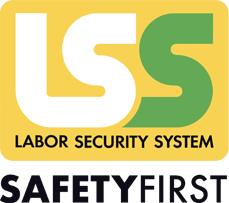Practical Guide to Chemical Cabinet Maintenance: Essential Steps for Constant Safety
Preventive maintenance of chemical cabinets isn't just a regulatory obligation; it's fundamental to ensuring safety in workplaces where hazardous substances are handled. A properly maintained cabinet significantly reduces the risk of leaks, fires, and contamination, protecting both personnel and the environment. One of the most common mistakes is neglecting the wear and tear of components such as gaskets, hinges, or ventilation systems. Even minimal deterioration can compromise the cabinet's effectiveness, increasing the risk of accidents. For this reason, regular and thorough maintenance is essential to promptly identify any damage or malfunctions and intervene before dangerous situations arise.
How can you structure a maintenance plan to detect early signs of wear and schedule necessary interventions without disrupting laboratory or industrial plant operations?
Here are the essential steps for proper maintenance:
- Regular Visual Inspection: Check for structural damage, such as dents or rust, which could compromise the container's integrity.
- Visual Inspection of Power Cable Integrity: If deteriorated, notify technical assistance.
- Verification of Collection Sumps: Absorb and remove any leaks.
- Instrumental Tests for Leakage Currents and Electrical Safety.
- Gasket and Door Verification: Check hinges, locking systems, door closers (if present), and door locking mechanisms. Lubricate movable parts with suitable products, and if gaskets are damaged, replace them.
- Cleaning and Disinfection: Clean chemical cabinets with non-corrosive, appropriate cleaning products for the environment. Ensure the interior does not contain chemical residues that could damage the cabinet materials or compromise their safety.
- Ventilation System Check: Ensure air is correctly evacuated.
- Update Safety Documentation: Maintain accurate records of maintenance interventions and periodic inspections, in line with workplace safety regulations.
For Labor Security System's SAFETYBOX® and KEMFIRE® cabinets, it's particularly important to verify the correct functioning of motorized extraction systems and activated carbon filters, where present. Filters must be replaced according to instructions and based on intensity of use. During KEMFIRE line maintenance, it's also crucial to check the functioning of certified valves that ensure natural ventilation and to verify that the thermo-expanding gaskets maintain their integrity.
Extraordinary maintenance, on the other hand, may involve upgrading ventilation systems, installing advanced monitoring systems, or modifying internal configurations to adapt to new operational needs. It's important that all extraordinary interventions are performed by qualified and authorized personnel to avoid compromising the cabinet's safety certifications.
In conclusion, chemical cabinet maintenance isn't an accessory activity; it's a genuine workplace safety safeguard. Consistently and precisely applying the described steps not only prolongs the useful life of the cabinets but, more importantly, prevents potentially dangerous situations for people and the environment. Dedicating time and resources to routine and extraordinary maintenance means fulfilling regulatory obligations and promoting a culture of prevention and responsibility. A safe chemical cabinet is the result of continuous attention: this is where every truly protected work environment begins.
Proper cabinet maintenance translates into tangible benefits, such as risk reduction, regulatory compliance, and optimization of operational costs.

